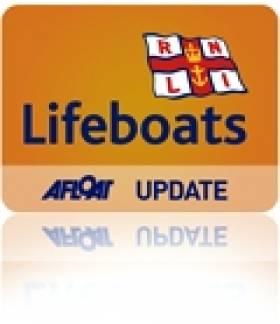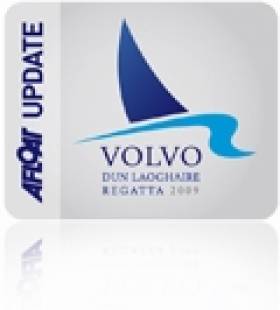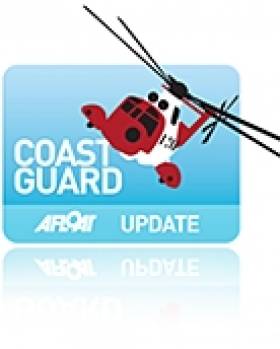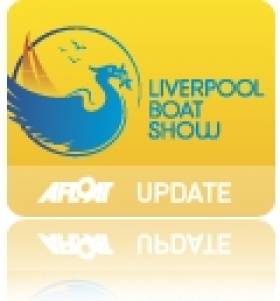Displaying items by tag: Liverpool
Liverpool Coastguard Rescues 93 People
The first call came in at 13.13 when four people became stranded near Fleetwood. Fleetwood Coastguard Rescue Team proceeded to the scene and they were safely brought ashore. The Lytham Coastguard Rescue Team were then tasked to a report of 70 people cut off by the tide at Blackpool near the South Pier. With Blackpool Beach Patrol and the Blackpool RNLI Lifeboat also on scene assisting everyone was subsequently reported as safely back to the shore.
At 13.41 Liverpool Coastguard received reports of two separate groups (one of five people, and one of nine people including four children) who had become stranded on sandbanks in Blackpool off Norbreck Castle. Once again Fleetwood Coastguard Rescue Team were sent to assist in getting them safely back to the shore.
At 14.35 Liverpool Coastguard sent Arnside Coastguard Rescue Team to a woman and two dogs who were cut off by the tide at Sandside near Arnside. The Morecambe RNLI Hovercraft was launched and took the lady and her dogs back to safety.
Finally, at 14.41 Liverpool Coastguard received a call reporting four girls potentially stranded on the spit at Little Eye in West Kirby. Hoylake Coastguard Team attended to investigate but the girls were deemed to be not in danger.
Liverpool Coastguard Watch Manager Su Daintith said:
"We know that on a beautiful like today that people don't want to waste any time getting to the beach in order to soak up the sunshine. But just two minutes spent checking the tide times (and there are plenty of resources available where you can find these) could mean the difference between a carefree day and a Coastguard Team coming to your rescue."
Two Vessels Collide off Isle of Man
At 0600 this morning the 17-metre fishing boat 'Lynn Marie' called Liverpool Coastguard to report a collision between their vessel and the 155 metre coaster 'MV Philip'. Although there was minimal damage to the coaster, the fishing vessel suffered extensive damage to her port side bow and began taking on water. Liverpool Coastguard requested the launch of the Port St Mary RNLI Lifeboat, and other vessels in the area including the HM Customs Cutter 'Sentinel'.
Crew from the Port St Mary Lifeboat boarded the fishing vessel with their pump, along with a pump from the Sentinel, to try and stop it from taking on water. The Port Erin RNLI Lifeboat was also launched to provide an extra pump. The Port St Mary Lifeboat then towed the fishing vessel stern first (due to the damage) into the harbour at Port St Mary.
Liverpool Coastguard Watch Manager Su Daintith said:
"The fishing vessel Lynn Marie arrived alongside at Port St Mary at 0941 with the intention to tow her into the inner harbour at high water. The coaster MV Philip proceeded on to its original destination of Greenock.
We have informed the Marine Accident Investigation Branch of this incident."
First Cruise-Caller of the Year
Onboard the ship which caters mostly for the UK market, asides the interior facilities there are the outdoor leisure amenities located on the Lounge Deck which has two jacuzzis and an exercise pool. There is also a large swimming pool and weather permitting a poolside buffet is also available at meal times. In addition a circular pool is located on the Marque Deck.
She alongside sister Black Watch belong to a four-ship fleet of the Norwegian owned company. Boudicca was built in 1973 and for many years served as Royal Viking Star as part of a trio of German built sisters for Royal Viking Line. The 205m long vessel underwent her last major refit in 2006.
Boudicca will remain berthed in Dublin's Alexandra Basin until she sets sail later this afternoon for the short overnight cruise-leg to Liverpool.
Last year Dublin Port handled 88 cruisecalls and this number of cruise-callers is to be closely repeated in 2011. Overall there will be over 200 cruise calls with around half a million passengers and crew scheduled to visit ports and anchorage locations throughout the island of Ireland. The cruise sector business is estimated to generate €60m to both the northern and southern economies.
Farewell to Former B+I Line Freight-Ferry
This will enable P&O to offer up to three Ro-Pax style sailings a day on the 7.5 hour route instead of the previous two-plus one ro-ro (freight-only operated) service. The Norcape could take 125 drop trailers but only had 12-passenger cabins (for freight accompanied truck-drivers).
Norcape was only re-introduced onto the Irish Sea last year but made her final departure tonight as the vessel headed into a foggy Dublin Bay.
In 1979 the Japanese built vessel was launched as the Puma for P&O but was chartered to B+I Line and renamed Tipperary. During the 1980's the vessel first operated a then new Dublin-Fleetwood route jointly operated with P&O, alongside Tipperary's Ro-Ro sister, Ibex. The P&O brand name Pandoro cleverly stood for P and O Ro, their roll-on roll-off freight division.

Cut-away deck profile of M.V. Tipperary and sistership of M.V. Ibex
The route's UK port switched to Liverpool in 1988 with Tipperary remaining on the route until sold to North Sea Ferries in 1989 and renamed Norcape. Prior to her transfer to the North Sea, the Tipperary collided with the 4,674grt bulker Sumburgh Head off the entrance to Dublin Port on 18 February 1988. For a report and photo taken of the two vessels which met at the port last year under different names click here.
Like the Tipperary the Sumburgh Head was built in Japan too by Hashihama Zosen KK, Imabari in 1977, yard no. 624. During her Dublin Bay incident, the vessel was owned by Christian Salvesen (Shipping) Ltd based in Edinburgh.
In 1990 she was sold to Barra Head Shipping Ltd and renamed Hood Head under the Irish flag. Three years later sold again to the KG Jebsen group and renamed Husnes.
The Panamanian flagged bulker remained with the Norwegian owner until 2003 when sold to her current owners, Wilson Shipowning AS of Bergen and renamed Wilson Tana, this time under the Maltese flag.
Entries Roll in for Volvo Dun Laoghaire Regatta
Forty entries are already in for Volvo Dun Laoghaire Regatta, a fixture widely expected to be the biggest in Ireland this season when it sets sail on Dublin Bay in July.
Organisers are expecting up to 500 boats to keep it on a par with the 2009 event. The early entries, 11 weeks ahead of the entry deadline, is being taken as a thumbs up by competitors for the fun and vlaue theme of this year's VDLR.
So far 22 different clubs have entered from six countries. The bulk of the fleet is Irish but there are early entries from France, Isle of Man, UK, Wales and Northern Ireland. Another good turnout is exepcted from Liverpool and Holyhead for boats competing in the IRC Lyver Cup Race across the Irish Sea. Ten boats from the Clyde will also compete on the Bay.
Cork's Conor Phelan the skipper of Jump Juice is one of the first Royal Cork boats confirmed.
Two handed IRC racing makes its debut in July's Volvo Dun Laoghaire Regatta organisers have also confirmed. Click HERE.
On the dinghy front, the Fireball class has confirmed it will be running an'Open Championship' within the regatta, an event that follows the class world championships in Sligo in June.
Bangor 'Not On Original List' of Coastguard Centre Closures
Northern Ireland’s only coastguard base was not originally among a list of those earmarked for closure, the Belfast Telegraph reports.
However the Bangor facility was added to the list after a "personal intervention" from UK Shipping Minister Mike Penning.
The minister has confirmed to the House of Commons that the original draft list of closures for streamlining the UK's coastguard service originally named Liverpool as the centre to be shut down.
Now the Bangor control centre is being pitted against Liverpool in the service shake-up as previously reported on Afloat.ie that will leave just three full-time coastguard stations across the UK.
DFDS Seaways Makes Final Irish Sea Departure
The ro-pax Dublin Seaways made a last crossing with a Saturday morning arrival at Birkenhead. After disembarking passengers, vehicles and freight traffic, the 21,856grt vessel immediately departed the Mersey for a short-term deployment on the company's North Sea Rosyth-Zeebrugge service.
Sistership, Liverpool Seaways also completed her last crossing to Birkenhead with an overnight Saturday sailing. This was the final scheduled sailing under DFDS Seaways ownership and marked the last foot-passenger crossing on the Liverpool route as rival operators P&O (Irish Sea) and Seatruck Ferries do not cater for this market.
The vessel returned to Dublin yesterday from Birkenhead; this was to facilitate the loading of drop-trailers and terminal based tugmasters (engine-driven truck/cabs) that tow unaccompanied trailers on the roll-on roll-off vessels. After a short turn around at the terminal, Liverpool Seaways departed Dublin, bound for Immingham. The UK east coast port is where DFDS operate an extensive freight route network across the North Sea.

The ro-pax Liverpool Seaways and freight-ferry Anglia Seaways berthed in Dublin Port yesterday prior to sailing away from the Irish Sea. Photo Jehan Ashmore / ShipSNAPS
In addition the 13,704grt Anglia Seaways also docked in Dublin yesterday from Heysham to perform similar duties like the Liverpool Seaways. Several hours later, the 114-trailer capacity vessel set a southbound course past The Muglins, bound for Avonmouth.
DFDS cited its decision to exit entirely from Irish Sea sector due to the sharp decline in the Irish and UK economies in 2008 and 2009. The company suffered continuous losses on its remaining routes and the issue of over-capacity, particularly on the north Irish Sea.
Only last December, the Danish owned shipping operator sold its other two Irish Sea routes to Stena Line in a £40m acquisition deal. This is all the more remarkable considering DFDS Seaways purchased the previous route operator, Norfolkline's Irish Sea division of their four routes and seven vessels, in July 2010.
The sale to Stena covered the three terminals used on the Belfast routes to Birkenhead and Heysham, which is another freight-only service. In addition the acquisition involved the sale of the South Korean built freight-ferries Hibernia Seaways and Scotia Seaways; like the Anglia Seaways they were all former Norfolkline / Maersk Line vessels.
Interestingly the acquisition is to include the purchase of the chartered 27,510grt ro-pax sisters Lagan Seaways and Mersey Seaways. When the Visentini built sisters were completed at the Italian shipyard, they were placed on the Belfast-Birkenhead route in 2005.
On 1 December Stena Line UK Ltd acquired DFDS Seaways Irish Sea Ferries Ltd (since renamed Stena Line Irish Ferries Ltd). Although the acquisition of SL ISF by Stena Line has been completed and DFDS no longer owns SL ISF, Stena Line await formal approval from the Irish competition authority and the UK's Office of Fair Trading (OFT) to integrate SL ISF into the wider Stena Line business.
In the meantime during this transitional period, it is business as usual for customers using the Belfast-Birkenhead and Belfast-Heysham routes. Online bookings continue to be accepted on www.dfdsseaways.com or tel: (01) 819 2999 and in the UK tel: 0871 230 033
Foot-Passengers to Lose Liverpool Link
Closure of the Birkenhead route will see the withdrawal of the 21,856 grt Italian built sister-ships Dublin Seaways and Liverpool Seaways. There are a number of options being investigated as to where the ro-pax pair will go, they may be deployed on other DFDS Seaways routes or placed on a sale charter arrangement.
In addition the Danish-owned shipping company is to close the freight-only Dublin-Heysham route this month. The route is served by the 13,074 grt Anglia Seaways which has a 114-trailer capacity. The vessel is due to be transferred to the Baltic Sea, according to DFDS Seaways which also operates an extensive route network in the North Sea.
Unlike DFDS Seaways use of the double river-berth terminal at Birkenhead, on the Wirral Peninsula, P&O and Seatruck vessels navigate through locks into the extensive Liverpool Docks system. Interestingly all three operators use sister-ships with P&O running the Dutch built ro-pax's Norbank and Norbay and Seatruck Ferries Spanish built Clipper Pace and Clipper Pennant.
Mersey's Biggest Sailing Event to be Staged at Liverpool Boat Show
About 150 boats will compete in a series of spectacular races on each of the two weekends of the show, which takes place from April 29 to May 8 next year.
Up to three races will be held each day on the weekends of April 30 and May 7, with classes for modern racing yachts, ultra-fast multi-hulls, local classes and traditional nobbys.
The regattas – comprising the Royal Dee Yacht Club Spring Regatta and the Liverpool Yacht Club Kindred Clubs Regatta – will be one of the main highlights of the Liverpool Boat Show, which takes place in the splendid surroundings of the Albert Dock.
Competitors from across the UK and Ireland are expected to take part in the regattas, which will see boats racing against each other on courses in front of the Albert Dock.
Today organisers urged enthusiasts and clubs to submit their entries for the races to secure a place in one of the most spectacular sailing events of the year.
Alastair Soane, chair of the race committee, said: "This will be the biggest sailing event for probably 70 or 80 years on the River Mersey and interest is already very high."
Alastair Soane, a past Commodore and President of Liverpool Yacht Club who sits on the steering committee of the boat show, added: "We already have expressions of interest from clubs and individuals in Scotland, Wales and Ireland and we are keen to get representation from the sailing fraternity right across the UK, including the South coast.
"The combination of the festival atmosphere of the show and the spectacle of the racing will make these truly unique events and we'd urge potential participants to register as soon as possible."
A number of North West clubs are supporting the regattas, including Liverpool Yacht Club, the Royal Mersey Yacht Club, the Royal Dee Yacht Club, West Kirby Sailing Club, Wallasey Yacht Club, Dee Sailing Club, Blundell Sands Sailing Club, Liverpool Sailing Club, Hoylake Sailing Club, West Lancs Sailing Club and the Nobby Association.
Mr Soane said: "The entire North West sailing community is throwing its weight behind the Liverpool Boat Show and we are determined to make it a show like no other and to showcase to a whole new generation the pleasure and benefits to be had from sailing."
Stena to Close Larne-Fleetwood Route
The route has made significant losses over recent years and to running an aging fleet on the 7-hour service. Stena cite that investment in new tonnage was not an option due to higher capitol costs. "No business can continue to carry such losses on an ongoing basis so there is no alternative but to close the route at the end of this year," he added.
The trio of vessels, Stena Leader (1975/12,879grt), Stena Pioneer (1975/14,426grt) and Stena Seafarer (1975/10,957grt) serve the link between Lancashire and Northern Ireland which takes freight, cars and their passengers but does not cater for 'foot' passengers.
Late last month a fire took place in the engine room of the Stena Pioneer during a sailing to Fleetwood, the fire was extinguished using onboard equipment and fortunately without incident to crew or passengers.The Stena Pioneer was operated by B&I Line as their Bison in a joint service with Pandoro on the Dublin-Liverpool route between 1989-1993.
Under the new agreement, Stena Line's take-over of Belfast-Heysham, the port is a close neighbour to Fleetwood will include the 13,000 tonnes sisters Hibernia Seaways and Scotia Seaways.The other route aquired is Belfast-Birkenhead (Liverpool) which is significant in that the deal will include the purchase of the chartered 27,000 gross tonnes ro-pax twins, Mersey Seaways and Lagan Seaways. The sisters were built in 2005 at the Visentini shipyard, Italy, which also built the ro-pax sisters Dublin Seaways and Liverpool Seaways.
Measuring 21,000 gross tonnes these vessels operate Dublin-Birkenhead route but remain under DFDS Seaways control and this applies to their freight-only service from the Irish capital to Heysham served by the Anglia Seaways. The 120-trailer freight ferry is also a sister of the Belfast-Heysham pair.
Notably the transaction will see Stena Line enter operations on the Mersey for the first time.The Swedish operator will use the river's Birkenhead Twelve Quays ferryport terminal located on the Wirral, opposite the famous Liverpool waterfront.
Stena Line will not only share the double berth facility with DFDS Seaways but also the Isle of Man Steam Packet (IOMSPCo) which in recent years has operated winter sailings to Douglas. In the summer the Isle of Man ferry operator uses the Liverpool landing stage berth on the other side of the river which is also shared by the 'ferry cross the Mersey' fleet operated by Mersey Ferries.





































































